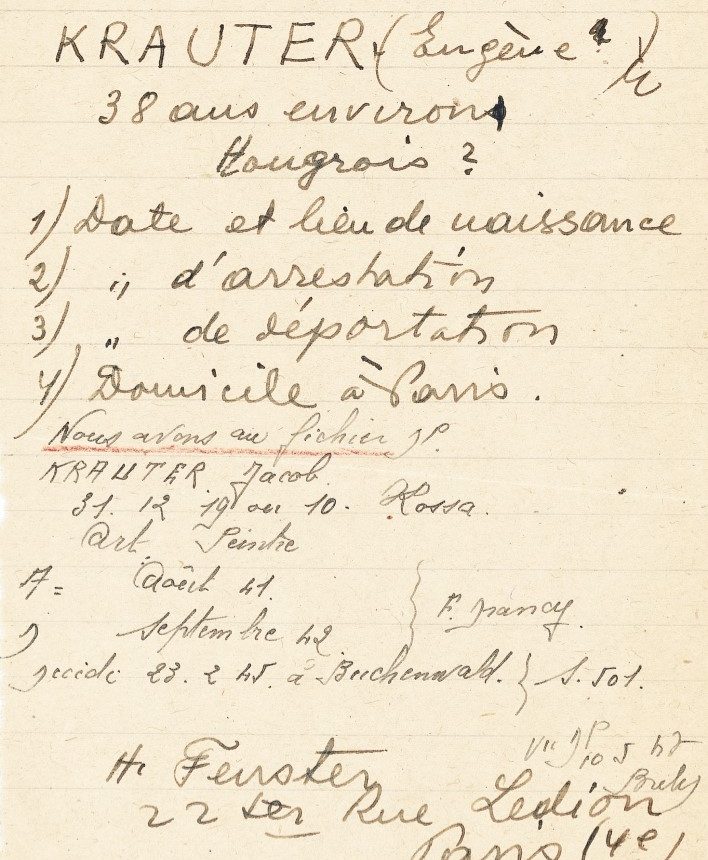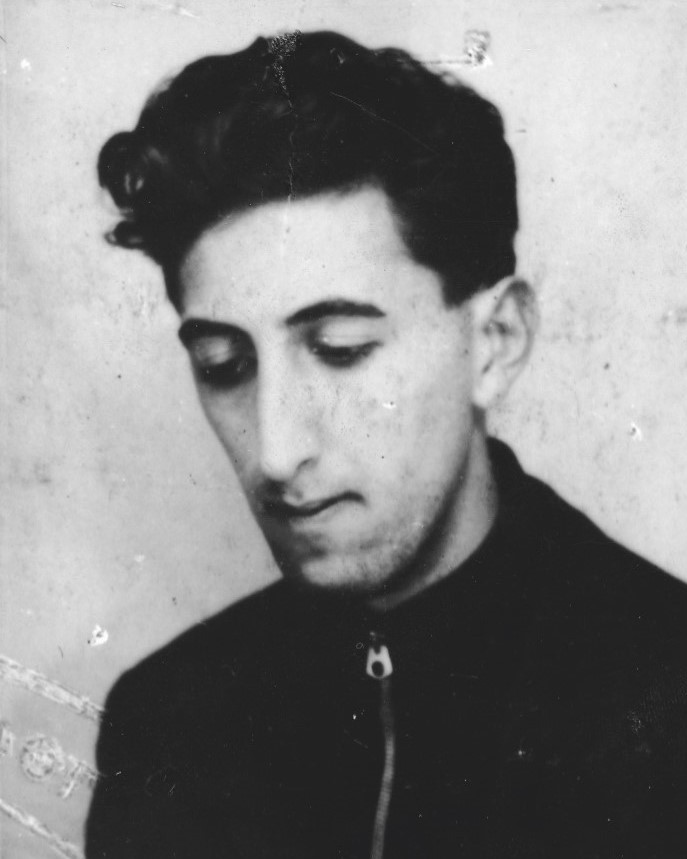Roman KRAMSZTYK
January 3, 2019Pinchus KRÉMÈGNE
January 3, 2019Jacob KRAUTER
KOCHITZ (SLOVAKIA) 1910 – DEPORTED TO AUSCHWITZ 1942
Jacob Krauter was born into an orthodox family. The Krauter family settled in Budapest and Jacob enrolled in the School of Decorative Arts, where he discovered Hungarian popular art. He arrived in Paris in 1931 and studied at André Lhote’s Academy. He painted constantly and was very involved in the Parisian cultural life. He continuously tried to improve his art and refused to exhibit as he considered that his work had not yet reached maturity. He also took an interest in music. When the war broke out, Krauter enlisted in the French army. He was discharged in 1940 and hid at a friend’s at night. One morning in August 1941, as he thought that he was no longer in danger, he went back home and was arrested. He was interned in Drancy for fourteen months during which period he took care of the children in the camp. Jacob Krauter was deported on September 11, 1942 on convoy number 31. He was murdered in Auschwitz.
Stories of Jewish Artists of the School of Paris 1905-1939
FRENCH-ENGLISH
Capitale des arts, le Paris des années 1905-1939 attire les artistes du monde entier. De cette période de foisonnement, un terme est resté, celui d'Ecole de Paris, qui recouvre une grande diversité d'expression artistique. Dans ce brassage dont Montparnasse est le creuset, un groupe se distingue : celui des artistes juifs venus de Russie, de Pologne et d'Europe centrale. Si leurs styles sont variés, un destin commun les rassemble : ils fuient l'antisémitisme de leur pays d'origine. Certains ont connu la célébrité dès les années 1920, tels Soutine, Lipchitz ou Chagall. D'autres n'ont pas eu le temps ou la chance d'y accéder. Près de la moitié a péri dans les camps de concentration nazis.
From 1905 to 1939, Paris attracted artists from all over the globe as the capital of the art world. This period of artistic proliferation became known as the School of Paris, and includes a great diversity of artistic expression. Within the teeming art world centred on Montparnasse, one group set itself apart: Jewish artists from Russia, Poland, and Central Europe. Although their styles were diverse, they shared the common fate of fleeing anti-Semitic persecutions in their home countries. Some became famous in the 1920s, such as Soutine, Lipchitz, and Chagall, while others did not have the time or the luck to gain renown. Nearly half of these artists died in Nazi concentration camps.






